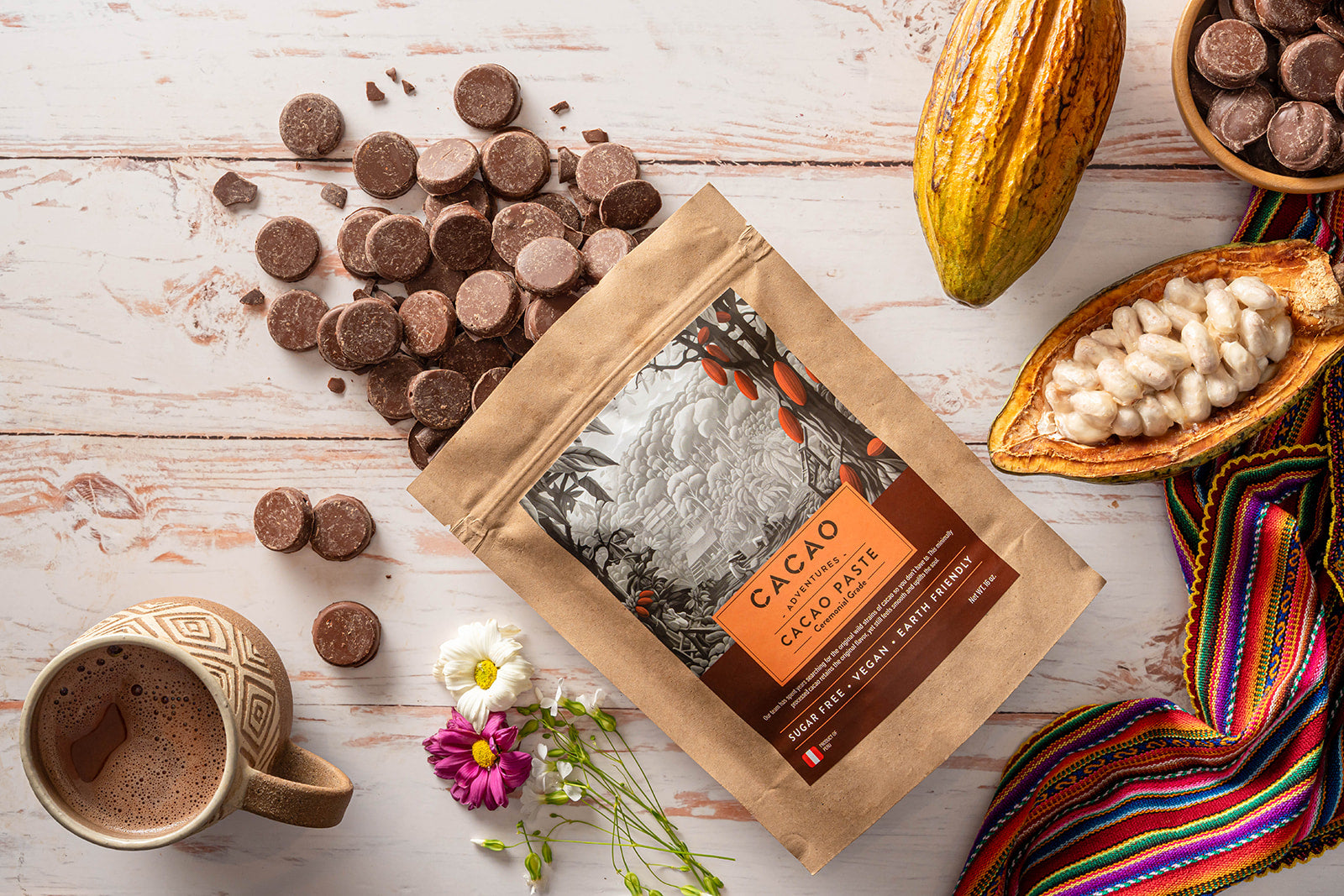
This is how our Cacao Adventures began...
We are not just a company
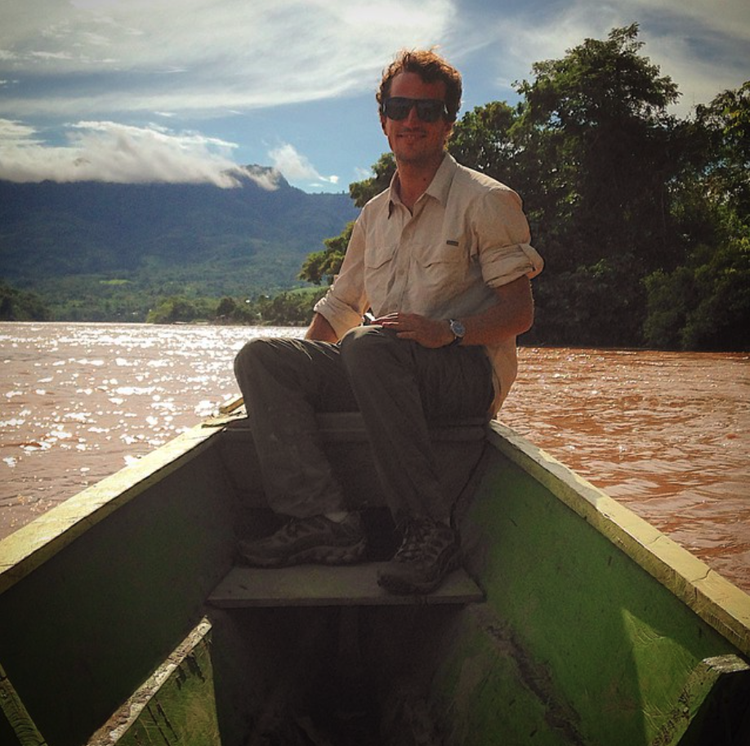
Our story
Since 2014, Jose's been on an amazing adventure – not just through the jungle but in a quest to discover the finest cacao source. Deep in the heart of the Peruvian jungle, he unearthed the treasure. What followed was a collaboration with local communities, enhancing fermentation and roasting using minimal but precise processing techniques for the world's ancestral cacao.
Given the limited supply, we craft our goodies in small batches, beginning with micro-lots at harvest and post-harvest. This way, we can preserve the flavors of the original wild strains, the ancestral tales, and the top-notch flavors, that accompany them.
Each product is not just curated; we're hands-on through every step. We want to guarantee the best quality, ensuring it reaches you just the way nature intended.

Our mission
At Cacao Adventures, we set out to find the original wild strains of cacao and bring them to market through well-thought-out products that transmit the respect and intention behind our supply chain.
Why do we source cacao from the High-Amazon Basin?
The heritage that this cacao carries is the most important reason why. Studies on the scientific side and recent findings from archaeological excavations prove that this ancestral land has so much to offer in terms of biodiversity, history, and cultural significance. The High-Amazon Basin is believed to be the birthplace of cacao, where its wild varieties first flourished. This region’s unique environment, with its rich soils and tropical climate, creates ideal conditions for growing the highest-quality cacao. By sourcing from here, we not only honor the roots of cacao but also support local farmers and preserve traditional cultivation practices that have been passed down for generations.
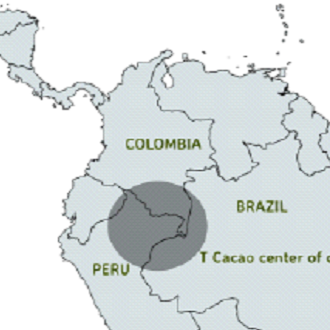
Tango-Lowly and McLintock (2022)
Available Research
Despite what most search engine’s 1 st page results might tell you, Cacao is not native to Central America, instead, the original wild strains have been scientifically proven to come from the Upper Amazon Basin, an area between Northern Peru, Southern Ecuador, and South-WesternColombia (Motomayor, et. al., Thomas, et. al.).
After collecting and analyzing DNA samples across borders, scientists have been able to
distinguish 10 different genetic clusters of cacao. This is a very different classification from the traditional 3 types - Criollo, Forastero, and Trinitario, which are found all over the internet and in old textbooks; this old system is now recognized as an inaccurate way to represent Cacao’s genetics. What’s more, scientists have identified the 4 phases of cacao’s genetic pathway from Malvacae, (the taxonomic branch of hibiscus, cotton, okra and durian) to Theobromoa and the 10 genetic clusters found currently found today (Tango-Lowly & McClintock, 2022).
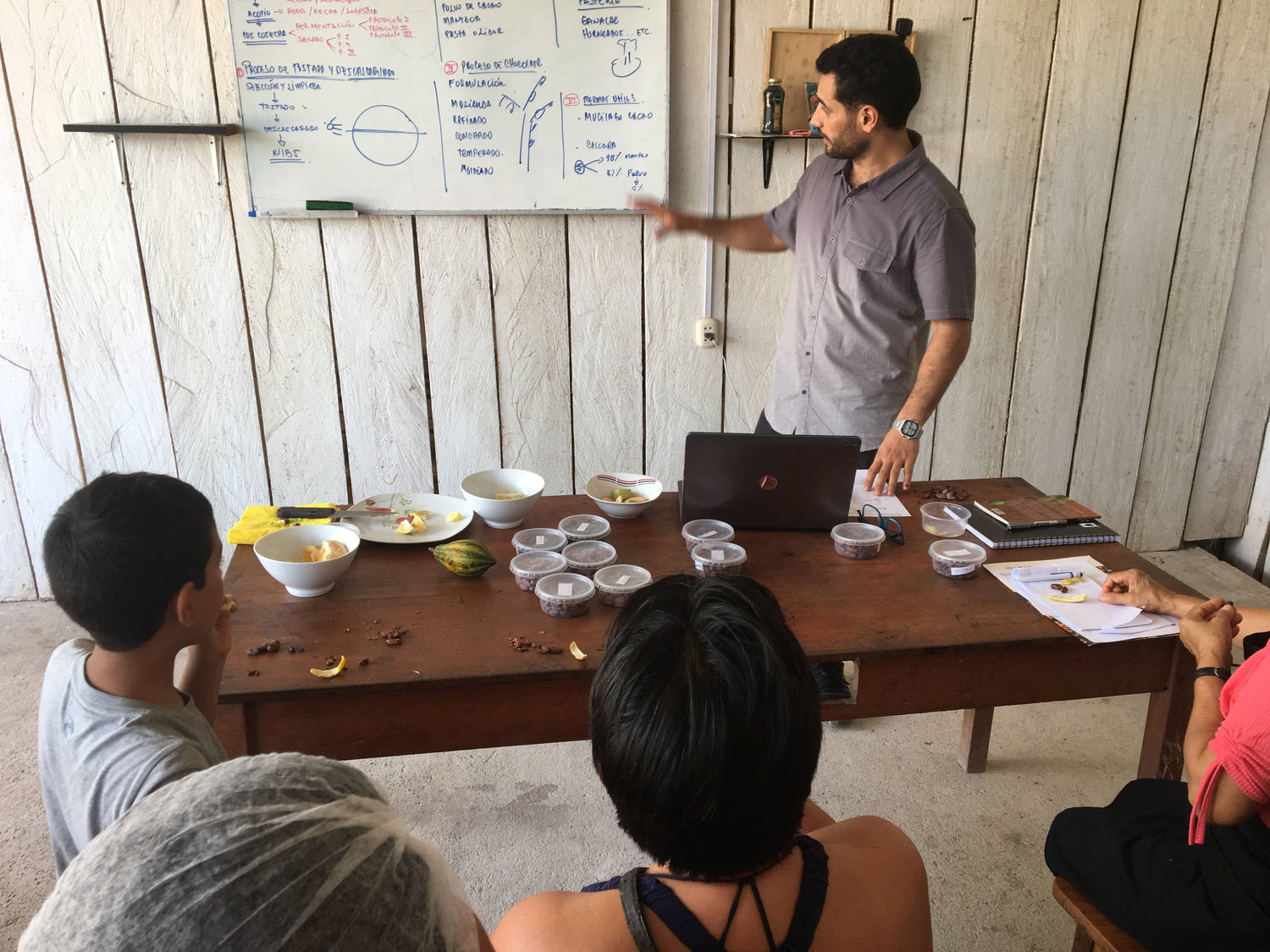
From Unesco
The Mayo-Chinchipe-Marañón culture is the oldest of the western Amazon region, with features of complex social sophistication and different forms of social hierarchies. The site best studied in this corridor so far is Santa Ana - La Florida (Palanda, Ecuador) at the
headwaters of the Chinchipe River. Among the vestiges found in the region, stonework art seems to have characterized this culture’s material expressions. Well-polished stone containers have been found all along the broad valley of the Chinchipe River… These dishes and bowls of different sizes have been made out of stone from various origins. This material was chosen to convey symbolic messages through complex symbolism, and reflects specialization of labor.
Stone mortar shaped like a cacao pod from Santa Ana – La Florida.
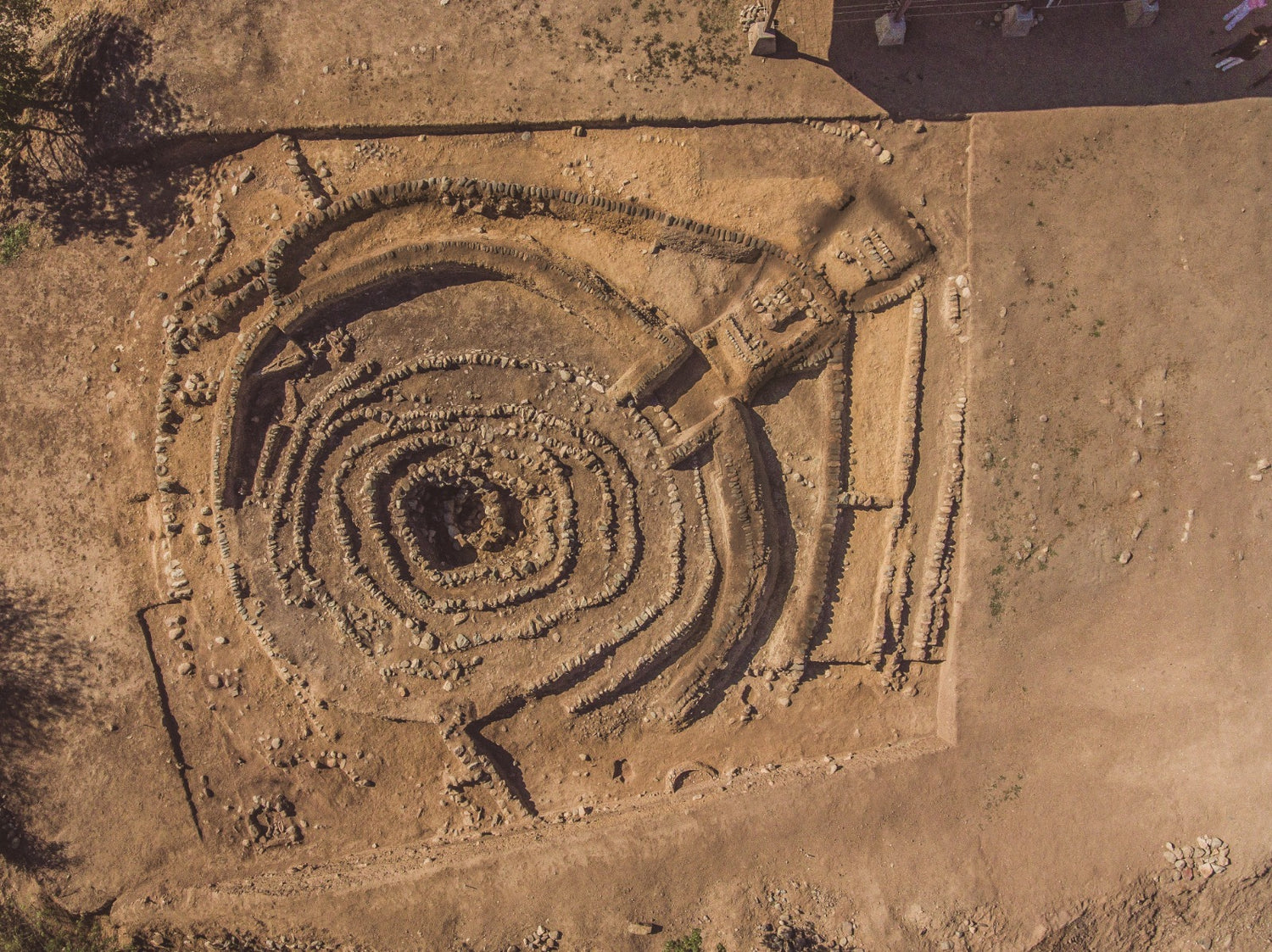
Supporting
Huaca Montegrande
We source our cacao from the High-Amazon Basin because of its undeniable connection to cacao's origins. The findings at Huaca Montegrande provide compelling evidence that this region is the birthplace of cacao cultivation. Archaeological discoveries at this ancient site have revealed cacao residues in ceremonial artifacts, dating back thousands of years. These findings confirm that the people of this region were among the first to recognize the value of cacao, cultivating and cherishing it as a sacred plant. By sourcing from this ancestral land, we honor its deep historical and cultural significance, ensuring that the legacy of cacao's birthplace continues to thrive.
We are also happy to share that we support the research of this amazing project.
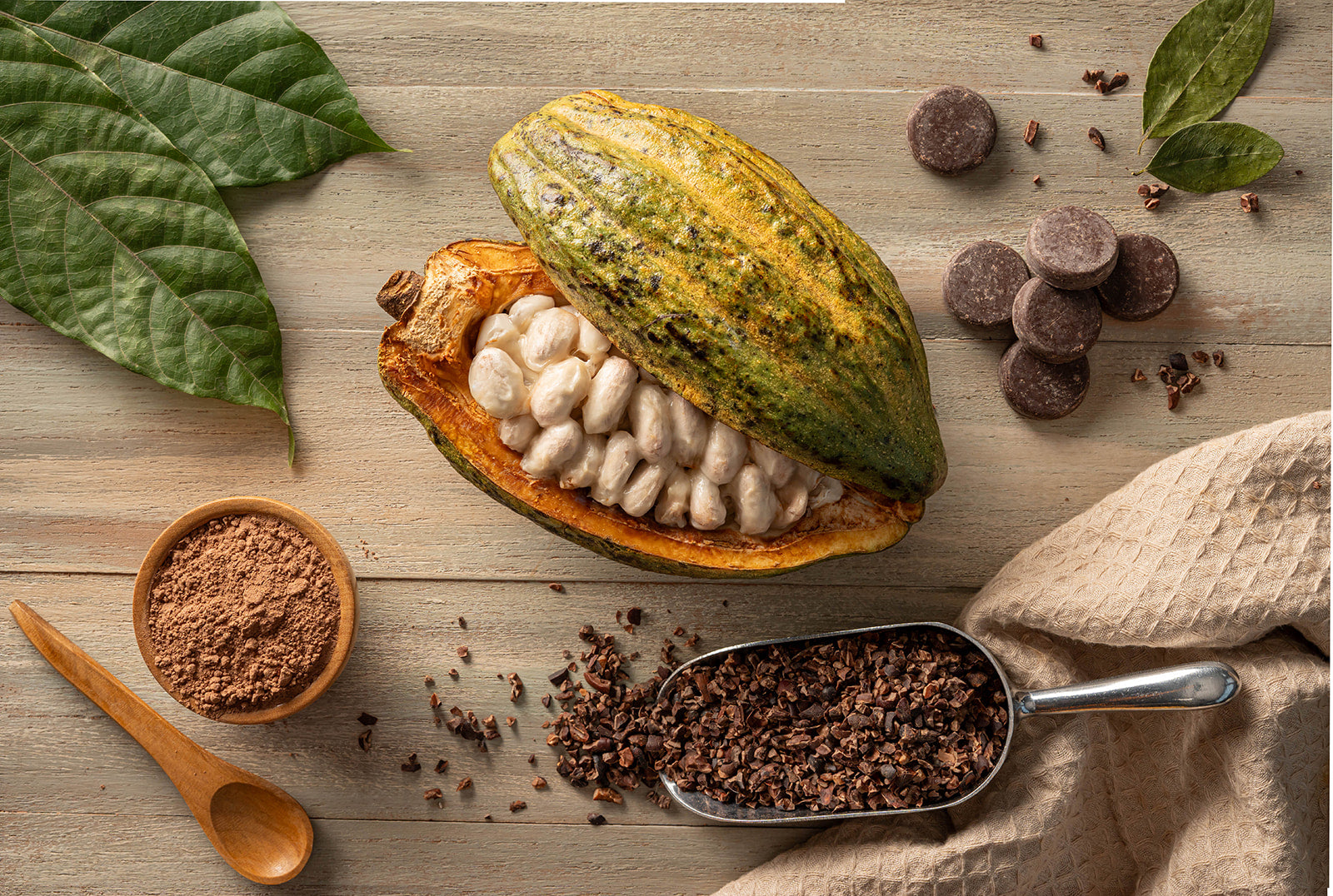
What we do
Using this information, we started traveling throughout the Peruvian countryside, primarily in Northwestern Peru, in Piura, Cajamarca, and Amazonas, to find these original wild strains and turn them into real chocolate. We set up a network of farmers, post-harvest specialists, and smaller scale processing facilities that are trained in high quality processes, but also have a deep respect for cacao and its future consumers. We currently source from the Amazonas region in Peru, in the high Amazon Basin, far away from most other urbanized parts of the world. We plan on becoming the number one source for high quality cacao and strive to create a short supply chain where we know all our farmers and consumers alike.

